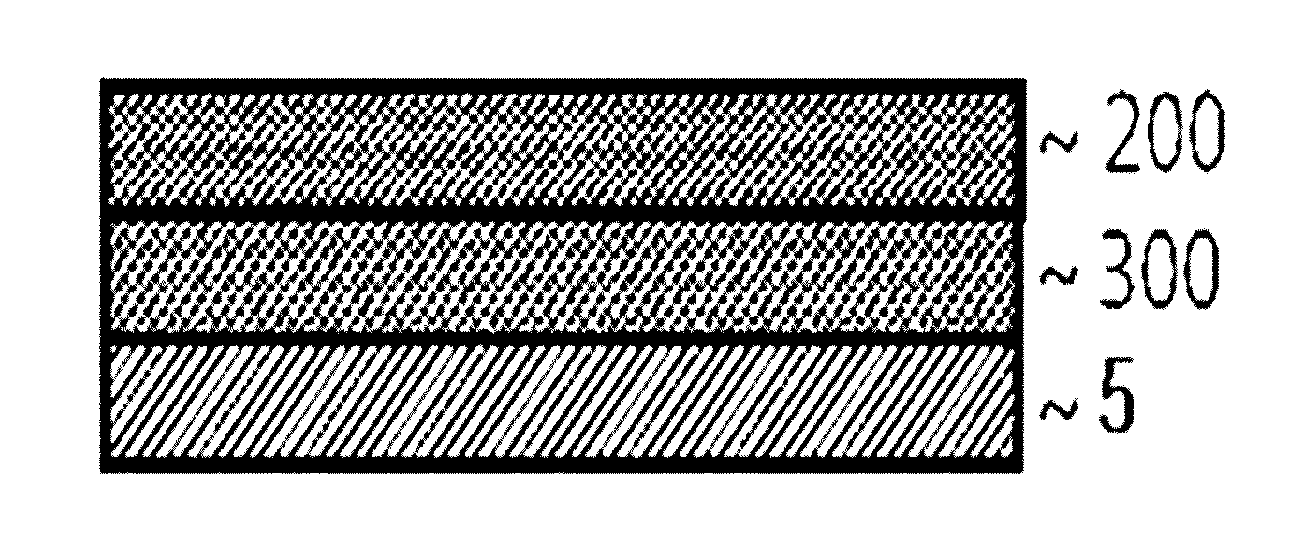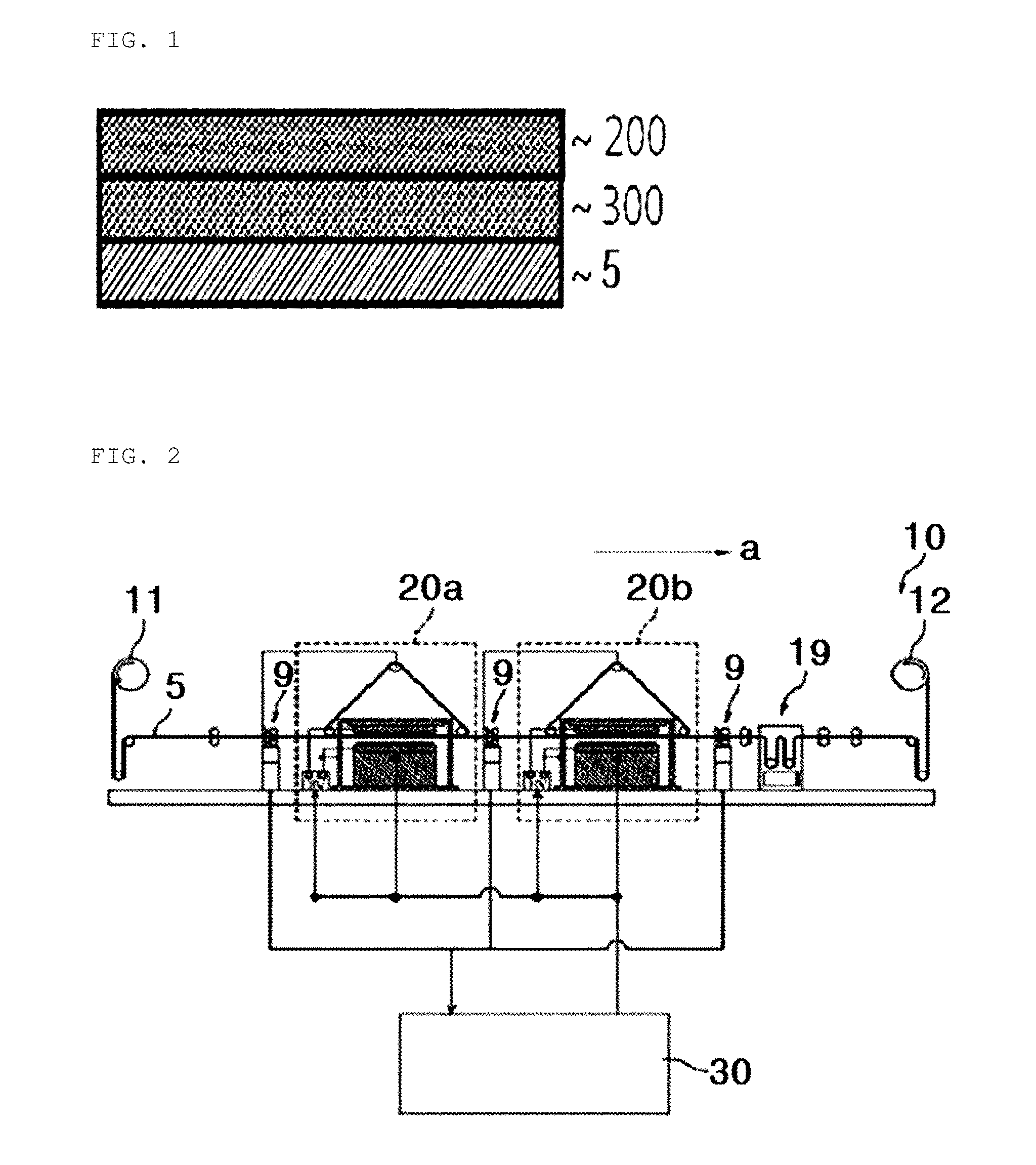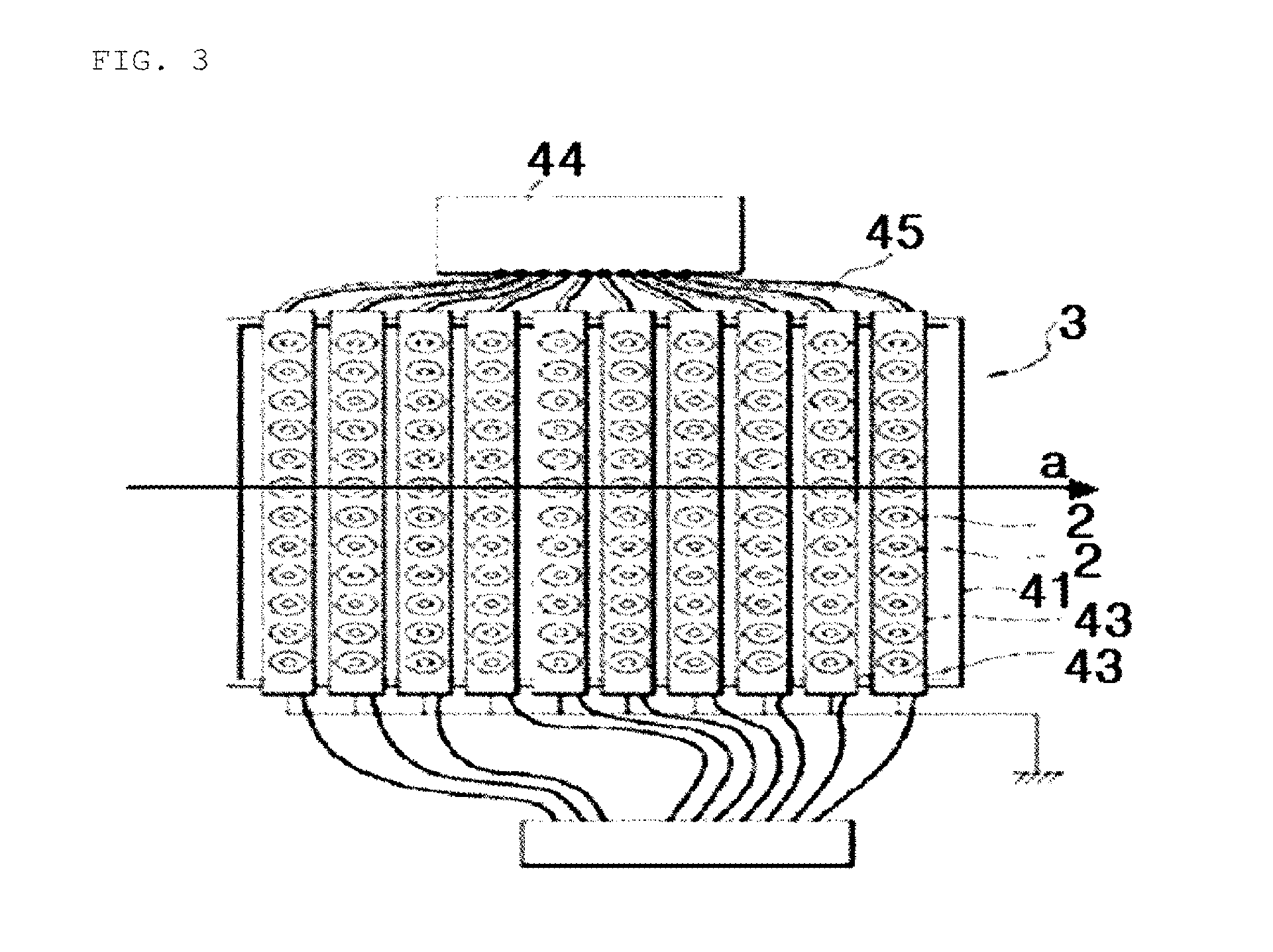Multi-layered nanofiber medium using electro-blowing, melt-blowing or electrospinning, and method for manufacturing same
a nanofiber and nanofiber technology, applied in the field of multi-layered nanofiber filter media, can solve the problems of reducing the sustainability of the filter, affecting the performance of the filter, and being easily damaged by high temperature, and achieves the effect of reducing the cost of production
- Summary
- Abstract
- Description
- Claims
- Application Information
AI Technical Summary
Benefits of technology
Problems solved by technology
Method used
Image
Examples
example 1
Preparation of Multi-Layer Nanofiber Filter Media Using Electro Blown with Electro Electrospinning
[0181]Electro-blown and electro-spinning dope was prepared by dissolving polyacrylonitrile (Hanil Synthetic) of average weight molecular of 157,000 into dimethylformamide (DMF) in the first and the second phase. Under the condition where the distance between the electrode and the collector of the electro-blown and electro-spinning, respectively, is 40 cm, the applied voltage is 15 kV, the spinning liquid flow rate is 0.1 mL / h, the temperature is 22° C., and the humidity is 22%, we produced multi-layer nanofiber laminated on the cellulose substrate, by, on the cellulose substrate, forming polyacrylonitrile nanofiber whose thickness is 3 μm, and, during the second phase, by spinning polyacrylonitrile nanofiber, in the thickness of the same 3 μm, of the same polymer on the polyacrylonitrile on the surface of the substrate as the collector moves at a constant speed.
example 2
Preparation of Multi-Layer Nanofiber Filter Media Using Electro Blown with Electro Electrospinning
[0182]Electro-blown and electro-spinning dope was prepared by dissolving Polyamic Acid (PAA) of average weight molecular of 100,000 into the mixed solution (THF / DMAc) of Tetrahydrofuran (THF) and dimethylacetamide (DMAc) in the first and the second phase. Under the condition where the distance between the electrode and the collector of the electro-blown and electro-spinning, respectively, is 40 cm, the applied voltage is 15 kV, the spinning liquid flow rate is 0.1 mL / h, the temperature is 22° C., and the humidity is 22%, we produced multi-layer nanofiber laminated on the cellulose substrate, by, on the cellulose substrate, forming polyamic acid nanofiber whose thickness is 3 μm, and, during the second phase, by spinning polyamic acid nanofiber, in the thickness of the same 3 μm, of the same polymer on the polyamic acid nanofiber laminated on the surface of the substrate as the collector...
example 3
Preparation of Multi-Layer Nanofiber Filter Media Using Electro Blown with Electro Electrospinning
[0183]Electro-blown and electro-spinning dope was prepared by dissolving 100% nylon 6 monomer into the mixed solution of tetrafluoro acetic acid and dichloromethane (DCM) with the weight ratio of 5:5. Under the condition where the distance between the electrode and the collector of the electro-blown and electro-spinning, respectively, is 40 cm, the applied voltage is 15 kV, the spinning liquid flow rate is 0.1 mL / h, the temperature is 22′C, and the humidity is 22%, we produced multi-layer nanofiber laminated on the cellulose substrate, by, on the cellulose substrate, forming polyamide nanofiber whose thickness is 3 μm, and, during the second phase, by spinning polyamide nanofiber, in the thickness of the same 3 μm, of the same polymer on the polyamide on the surface of the substrate as the collector moves at a constant speed.
PUM
| Property | Measurement | Unit |
|---|---|---|
| Electrical resistance | aaaaa | aaaaa |
| Heat | aaaaa | aaaaa |
Abstract
Description
Claims
Application Information
 Login to View More
Login to View More - R&D
- Intellectual Property
- Life Sciences
- Materials
- Tech Scout
- Unparalleled Data Quality
- Higher Quality Content
- 60% Fewer Hallucinations
Browse by: Latest US Patents, China's latest patents, Technical Efficacy Thesaurus, Application Domain, Technology Topic, Popular Technical Reports.
© 2025 PatSnap. All rights reserved.Legal|Privacy policy|Modern Slavery Act Transparency Statement|Sitemap|About US| Contact US: help@patsnap.com



